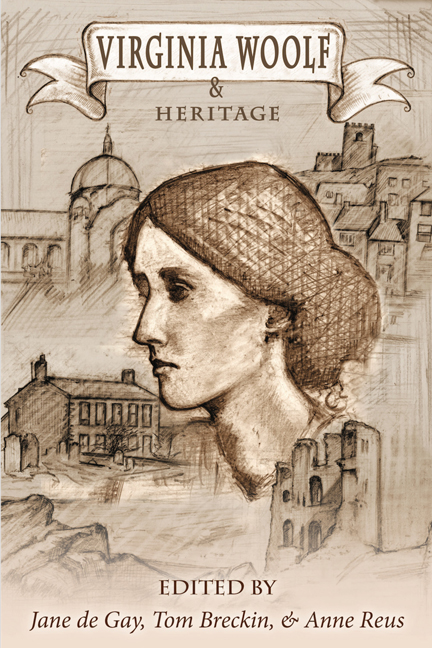Book contents
- Frontmatter
- Contents
- Introduction
- List of Abbreviations
- HERITAGE: A DEBATE
- HERITAGE, EDUCATION, AND MENTORING
- HERITAGE SPACES
- LITERARY AND CULTURAL HERITAGES
- QUEER PASTS
- MODERNISM AND HERITAGE
- WRITING LIVES AND HISTORIES
- The Play of Fact and Fiction in Virginia Stephen's “The Journal of Mistress Joan Martyn”
- “Writing the history of my own times”: Virginia Woolf and the Diary
- Heritage, Legacy, and the Life-Writing of Woolf and Rhys
- Life as Legacy: Truth, Fiction, and Fidelity of Representation in Biographical Novels Featuring Virginia Woolf
- From the Author to the Icon: A Heritage of Virginia Woolf in French Biographies and Biofictions
- Flights of Archival Imagination: Woolf 's Transcendent Materiality in Contemporary “Archive Fiction”
- WOOLF'S LEGACIES
- FINALE
- Notes on Contributors
The Play of Fact and Fiction in Virginia Stephen's “The Journal of Mistress Joan Martyn”
from WRITING LIVES AND HISTORIES
- Frontmatter
- Contents
- Introduction
- List of Abbreviations
- HERITAGE: A DEBATE
- HERITAGE, EDUCATION, AND MENTORING
- HERITAGE SPACES
- LITERARY AND CULTURAL HERITAGES
- QUEER PASTS
- MODERNISM AND HERITAGE
- WRITING LIVES AND HISTORIES
- The Play of Fact and Fiction in Virginia Stephen's “The Journal of Mistress Joan Martyn”
- “Writing the history of my own times”: Virginia Woolf and the Diary
- Heritage, Legacy, and the Life-Writing of Woolf and Rhys
- Life as Legacy: Truth, Fiction, and Fidelity of Representation in Biographical Novels Featuring Virginia Woolf
- From the Author to the Icon: A Heritage of Virginia Woolf in French Biographies and Biofictions
- Flights of Archival Imagination: Woolf 's Transcendent Materiality in Contemporary “Archive Fiction”
- WOOLF'S LEGACIES
- FINALE
- Notes on Contributors
Summary
The only thing that is different from one time to another is what is seen and what is seen depends upon how everybody is doing everything. This makes the thing we are looking at very different and this makes what those who describe it make of it, it makes a composition, it confuses, it shows, it is, it looks, it likes it as it is, and this makes what is seen as it is seen. Nothing changes from generation to generation except the thing seen and that makes a composition.
—Gertrude Stein, ‘Composition as Explanation’ (219)Virginia Woolf's knowledge of history was immense and close readings of her work reveal numerous, often buried, allusions to the past. In 1905—almost thirty years before Boris Anrep used her likeness for his mosaic depiction of Clio, the Muse of History, set into the entrance floor of the National Gallery—the young Virginia Stephen described herself to Violet Dickinson as “a journalist who wants to read history.” She wanted to “produce a real historical work this summer,” she said, “for which I have solidly read and annotated 4 volumes of medieval English” (L1 190). What came of this ambition is unclear; however, one year later she sketched out “The Journal of Mistress Joan Martyn,” a kind of satire about historiography. At first glance, this short story seems a far cry from a “real historical work,” which should be grounded in textual references and citations. However, more in this short story may be based on fact than has been recognized, and the writing provides us with an enticing introduction to a method of engaging with the past that I believe Woolf developed as a practice in her later fiction.
Before suggesting the real life sources for the short story's material, I want to emphasize the importance for Woolf of historical material—artifacts—as a means of exploring character and gaining access to the interior lives of people no longer present. At the start, Woolf's protagonist in the short story, the historian Rosamond Merridew, scans the English countryside with her “archaeological eye” (CSF 35) for material remains that provide insight into the mundane nature of everyday lives, which for her constitute essential yet forgotten moments of history.
- Type
- Chapter
- Information
- Virginia Woolf and Heritage , pp. 190 - 195Publisher: Liverpool University PressPrint publication year: 2017



